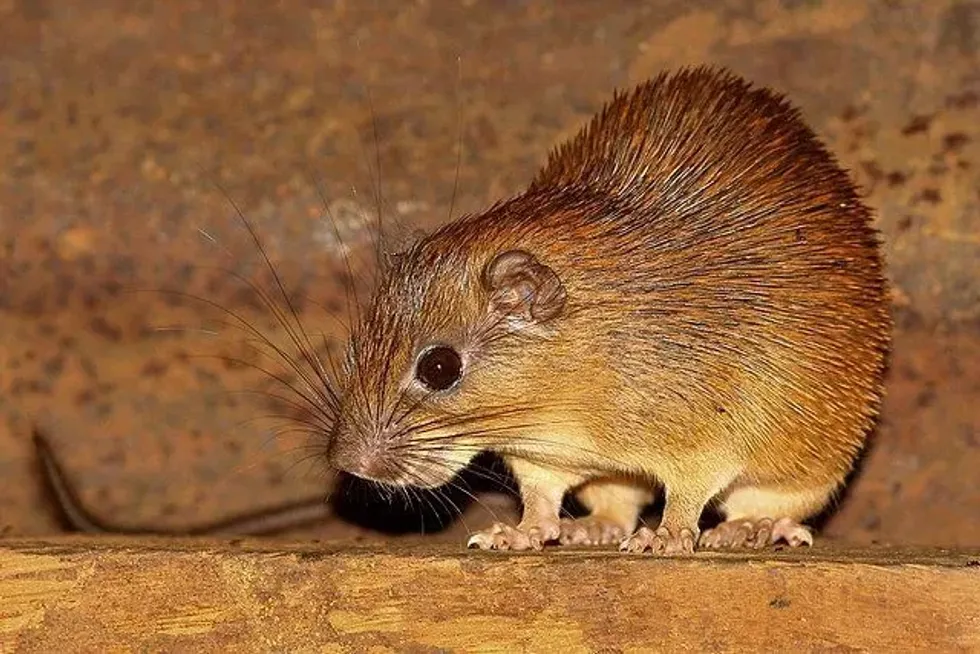An American spiny rat is a neotropical mammal that can be found in Central and South America, around 78 species can be found in this family of rodents, and can range of these species they either live in solitary or in small groups.
There are many interesting characteristics of these rats like their tails, for example, can range much in length than their body. The tail can cut off or get lost in the wild to confuse predators.
The spines of these rats are a little weak especially the fifth vertebra just like in lizards!
To know more about some interesting facts regarding cute animals like these, be sure to check out our articles about the kangaroo rat, or the pouched rat.
Spiny Rat Interesting Facts
What type of animal is a spiny rat?
An American spiny rat is a rodent that is quite ecologically diverse with species living arboreal to terrestrial to semiaquatic habitats.
What class of animal does a spiny rat belong to?
A spiny rat belongs to the class of Mammalia, which is a group of vertebrate animals.
How many spiny rats are there in the world?
No estimated number is given as to how many spiny rats are there in the world as there are many subspecies in this family of spiny rats. The population was last calculated in 1978 and the population is said to be declining ever since!
Where does a spiny rat live?
These spiny rats are nocturnal species they usually prefer living in burrows, treetops, savanna, tropical forests. Some terrestrial rats burrow and some do not, these rodents can range from southern Mexico through South America to Paraguay and southeastern Brazil, Western Colombia, and northern Ecuador, and some are also found in the northern part of Yanbaru islands.
Many genera are said to live in eastern and southern Brazil and Paraguay while most of the population density can be found throughout Central and South America.
What is a spiny rat's habitat?
Spiny rats being rodents by nature has a variety of habitats ranging from tropical rainforests to burrows systems. Spiny rat habitat and ecology are also arboreal that live on treetops or thick tree forests while some species like the trichomyis can adapt to thick deciduous forest.
Who does the spiny rat live with?
The population density of these rodents is quite abundant in their preferred habitat or forests. Even though the geographic region has a dense population of spiny rats, males and females species have separate territories or can be near their habitats in order to defend their burrows and food from predators.
How long does a spiny rat live?
This rodent is said to have a lifespan of around two to four years! Not a lot is known about the ecology of this species.
How do they reproduce?
Echimyids are divided into several subspecies and therefore do not follow any familiar rodent pattern. Although, males and females have different territorial areas during the mating season the male tries to lure the female species for the breeding season.
Spiny rats are said to breed throughout the year with an average litter size of one to four litters. During the gestation period, the female carries the litter in her womb for around 60-70 days. The babies then reach their maturity in five to six months.
What is their conservation status?
According to the IUCN Threatened species list, the conservation status of spiny rats is considered not threatened. Yet three species of spiny rats are extinct or have died out while one species is critically endangered and five species are termed vulnerable due to the high risk of extinction in the wild.
Spiny Rat Fun Facts
What does the spiny rat look like?
The proechimys species is said to look like normal household rats but particularly with a larger head and small ears.
The length of their head and body is around 6-12 in (16-30 cm) while the length of their tail is approximately 4-12 in (12- 30 cm).
These Rodentia have soft fur with flat flexible spines present at the rump and back that are bristly to touch since they're hardened flattened hair, these spines are narrow at the base as they appear from the skin.
The color for their body is brown-orange at the top and the underparts are white with reddish-brown.
These rats have short limbs, their front feet have four toes and the hind feet have five toes from which the last toe is said to be a vestigial part.
Another amazing characteristic of the proechimys genus is its tail; tails are used as a defensive feature against predators as they can shed or break it off their body and can fool the predators long enough to escape but unlike how lizards can regenerate, unfortunately, spiny rats cannot, as this technique can only be used once in a lifetime.

How cute are they?
These nocturnal species are not quite appealing to look at as they may scare off many human beings and are often attacked by various predators.
How do they communicate?
Not a lot of information is given as to how these rats communicate but since they have large eyes and are nocturnal, it can play a huge factor in communication. Rats are also said to communicate with each other by producing ultrasonic frequencies by their tail and releasing chemicals that can be sensed by the olfactory system.
How big is a spiny rat?
A spiny rat (proechimys) can be compared to the size of a cat, they are also said to be closely related to the subfamily of the Capromyidae (Hutias) Caribbean rats that are now considered to be extinct.
How fast can a spiny rat move?
Rats are considered tp be one of the fastest moving rodents and spiny rats are also quick to climb and grasp any tree.
How much does a spiny rat weigh?
This rat weighs around 0.27-2 lb (130-900 g), the length of their tail is almost as long as their head and body. The weight of their tail is very light and invisibly pale in color. They weigh almost the same as a white-footed mouse or, wood mouse.
What are the male and female names of the species?
Males and females do not have any specific names designated for this species. A group of rats is called a mischief.
What would you call a baby spiny rat?
There is no specific name for a baby spiny rat but typically baby rats are pups or kittens.
What do they eat?
The diet varies according to different species, although most of them are herbivorous.
They usually feed on stems of plants, fallen fruit, nuts, insects, and fungi, as they feed on fungi they act as dispersed agents.
For some species like the Rato de Taquara, the diet includes only fallen fruit and stems of bamboo shoots, and as these Rodentia are abundant in a large forest they usually feed on fruit trees, like palm and fig trees.
It is observed that many species return back to their territories and store them in their burrow system if necessary.
Are they poisonous?
No, they are not poisonous but the spines present on their fur can be harmful to humans as they might cause various diseases known to man. They could also carry dangerous toxins from plants through their spines.
Would they make a good pet?
No, they would not make a good pet as humans are afraid of rodents and tend to kill them instantly. Some species are hunted and eaten by humans while some are killed by farmers who consider them a threat to their farms.
This may also be the reason why these rats become food for snakes like worm snakes or hawks.
Did you know...
Most species cannot survive in high heat regions or places that do not have any water bodies near their habitats. They prefer habitats that have abundant water.
The population density of these rodents keeps fluctuating seasonally but can double up at the end of the rainy season.
These rodents play an important part in the ecology of this planet as they distribute various seed or forest plants through their excretion.
Spiny rat scientific name, echimyidae is derived from the Greek word 'ekhinos', meaning a hedgehog, and, 'mus' meaning a mouse.
In March 2008 the first specimen was caught in the northern part of Okinawa islands.
These rats can be found on the island of Borneo, mainly in Kalimantan and Sarawak regions.
Types of spiny rats
Spiny rats are neotropical mammals in the family of echimyidae. In this family of echimyidae there are several subfamilies: the Echimyinae, Dactylomyinae, Chaetomyinae, and Heteropsomyinae.
There are various types of species in this genus around 20 genera and 78 species are found. Members of the echimyidae are spreading quite extensively, especially the Proechimys genera, they are considered as the evolutionary trend of this family. The four species that were extinct in the nineteenth century were found in West Indies.
Are spiny rats endangered?
According to the IUCN list, spiny rats altogether are not considered endangered but there are many species that are declining over time. Three species have completely gone extinct and one species is said to be critically endangered while nine species are nearly threatened. These species are also threatened by deforestation and habitat loss due to the growing human population.
Here at Kidadl, we have carefully created lots of interesting family-friendly animal facts for everyone to discover! For more relatable content, check out these rice rat facts and naked mole-rat facts.
You can even occupy yourself at home by coloring in one of our free printable long-tailed mouse coloring pages.










